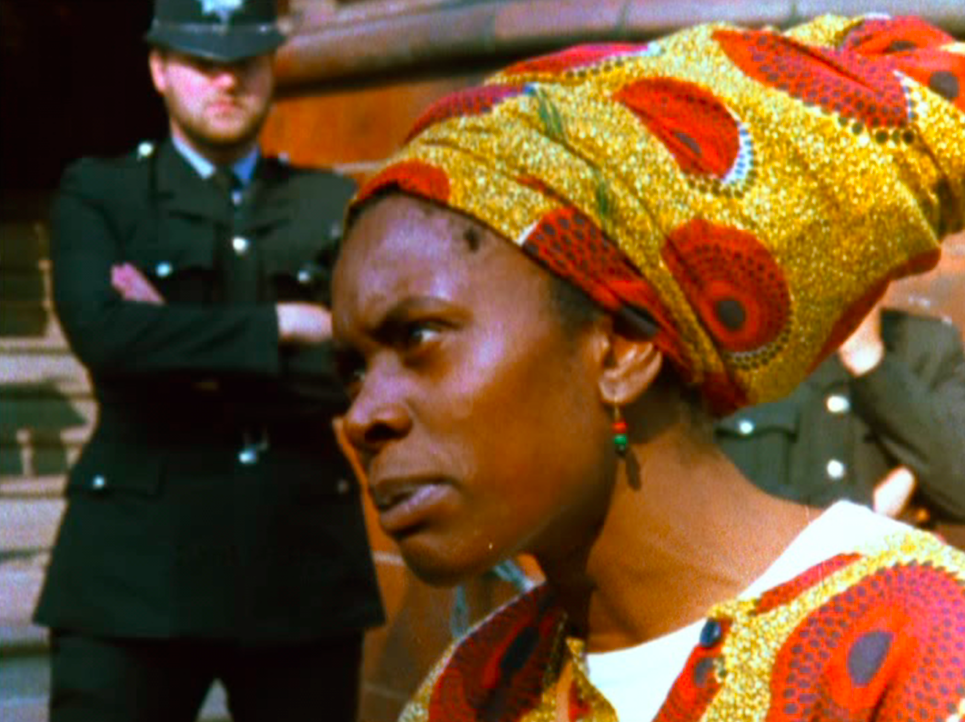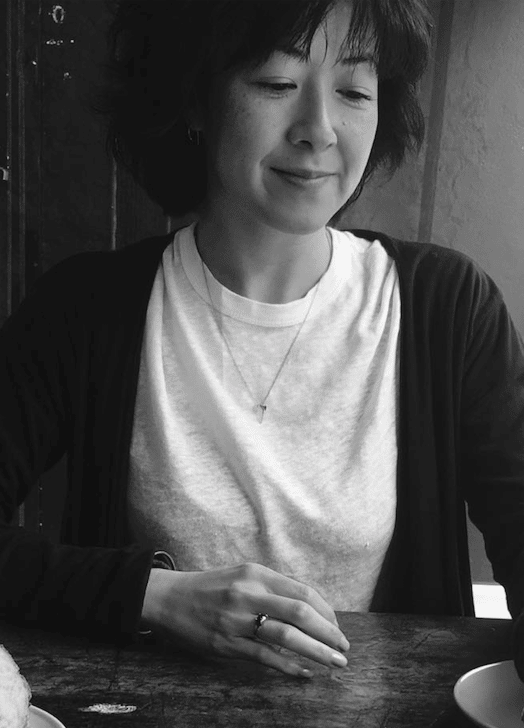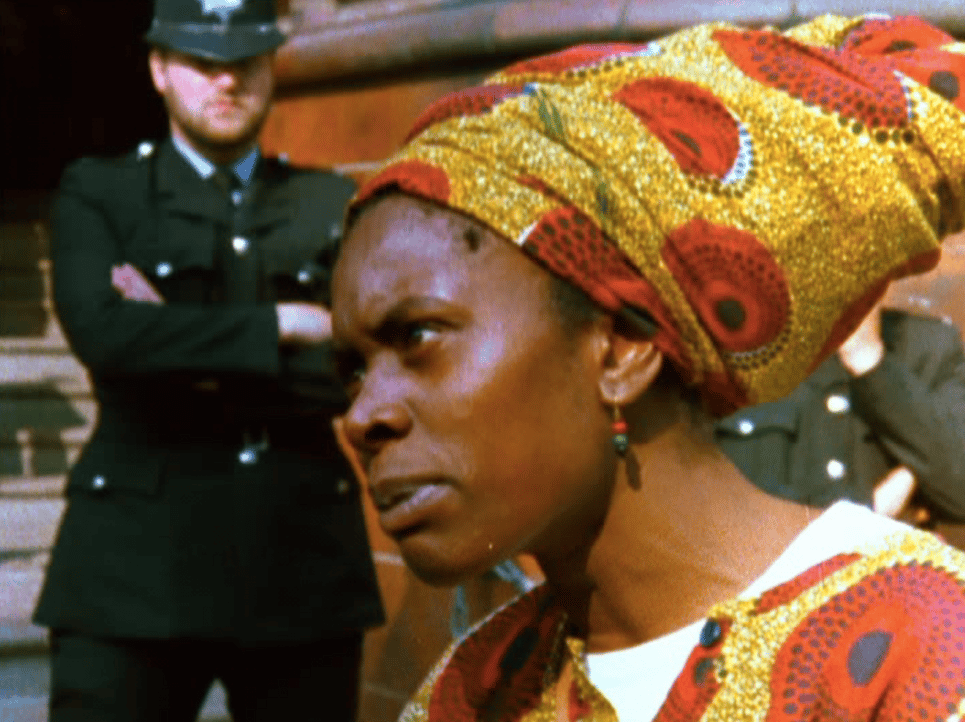
By Natalie Willis
The NAGB, in collaboration with LUX Scotland, has put together some really incredible content for our series of film screenings as part of the programming for our current exhibition in partnership with the British Council, “We Suffer To Remain”. Moving image has impacted us so greatly as a region in terms of shaping our narratives, and in how we decolonise and re-shape those narratives for ourselves. The first programme in the series of screenings, titled “One Turn of the Revolution”, featured artwork by the lauded Black Audio Film Collective and Barbadian-born, Glasgow-based Alberta Whittle, dealing with issues around migration and the post-colonial in Britain and in former colonies. Programme II, “Poetics of the Undercommons” will be on view at the NAGB on June 14th.

Portrait of Nicole Yip. Image courtesy of Yip.
This week we are in conversation with Nicole Yip, director of LUX Scotland, to see how she began to think through tackling this project and what it means to partner with Caribbean institutions.
NW: Is this the first time LUX Scotland has partnered in the Caribbean and if so what significance does this have for you?
NY: It feels really exciting! A big strand of our current work has to do with ideas around racial equity and diversity, and ideas of transformative justice, especially in the context of Scotland where we’re based. So this has been a continuing thread in which we have mainly been working towards a local context, but we have the chance to expand these discussions in an international context and it seemed like the logical next step. As I mentioned in the introduction to the screening it was one that was quite daunting.
NW: In what kind of way?
NY: It’s a big subject, it’s very loaded, and it’s one that I’m not immediately at home with given the fact that I’m not Scottish, not British, and I have never had the opportunity before to work with or in the Caribbean. I feel that although it was daunting at first, it was through the research that we just started to peel back the corners of something bigger. Looking within the trajectory that we’re operating in as an organisation, we’re currently working on a commission with Alberta Whittle titled “Where Does the Black Atlantic End?”, which draws on Paul Gilroy’s ideas of antiphony and of call-and-response across the Atlantic, and also on Kamau Brathwaite’s notion of tidalectics. These conversations are all kind of channelling in, and hopefully this isn’t the end but the beginning of something more extended over the coming years. I do really think that, for me, the logical next step is to bring some of these conversations back to Scotland now.
NW: It’s good to see that genuine investment in exchange. Tell me more about this.
NY: I think a lot of the things that came up at the screening, things that I wasn’t sure about in terms of what the reception would be like for how people would relate to the films… It seemed like they really did resonate and it precipitated so many thoughts and responses and what people saw as parallels that we can now bring this back to Scotland, where I think the conversation has advanced enough so that something fruitful can come of it.
NW: So what advice would you give to British organizations that wish to do work in the Caribbean?
NY: To work with a sensitivity to the context and the histories and to take care to not replicate the same mechanisms that have historically been perpetuated since the 1600-1700s. To take the time and care to make it a truly two-way conversation is something that needs to happen, quite urgently, and without expectation, without any kind of ulterior motive. You should do so without thinking at the back of your mind feeling that you need to get something out of this, and that you need to “tick boxes”. Just have a very genuinely open-minded dialogue. Which all seems like it’s a tall order for some organizations.
NW: Extraction and exhaustion have been some of the words I’ve heard discussing this, but it’s an old and rooted tradition. Though, like you say, a truly two-way conversation needs to occur for change to begin. On this note, did you experience any challenges or notice any biases or surprises in the collection as you were digging to find content for us?
NY: Probably the fact that there is not that much work in the collection that addresses this kind of subject matter was the most surprising. Obviously the more established things that I knew already were there, those bigger works, and they were a starting point. In particular, the works by the Black Audio Film Collective including John Akomfrah, but also artists like Isaac Julian, and Sankofa. There are also other contemporary makers such as The Otolith Group that could be relevant to the program. Because of the way LUX’s collection was historically formed, from the 1960s, it was established as an open submission model and really depended on people passing through and leaving their films there in order to enter the collection. This of course means there is an inherent bias in that collection of mainly European and American makers. And that is still largely the case.

Black Audio Film Collective, Handsworth Songs, 1984. Image courtesy of the artist and LUX.
NW: Explain how that bias works a little more for me.
NY: Because we at LUX see ourselves as the de-facto British National Collection for film, the current acquisition policy is such that we are mainly looking at work that doesn’t necessarily have to be British or made in the UK, but in some way the artist has to have achieved some sort of peer recognition within the community in the UK and contribute to the context there. That immediately precludes a lot of makers who work outside of the discourse and circles that we are grounded in. There is a big gap there. But as a collection we don’t make any claims to it being objective, and you just can’t deny its subjectivity. You have to instead draw a line around it and acknowledge that it can include everything.
So while there are gaps, I think what’s nice about working at LUX Scotland, where we can draw on the LUX collection but aren’t limited by it, is that we also have access to another community of younger generation makers based in Scotland who are making really interesting work. People like Camara Taylor and Alberta Whittle are from this generation, but then there are others who are of an older generation, but whose work is difficult to get hold of. This is because a lot of these artists haven’t entered the canon in the same way that a lot of white makers from Scotland have – just because traditionally there hasn’t been a strong lineage of African or Afro-Caribbean making in Scotland. So because of all this, their work has never been understood as part of the African Diaspora there in the same sense, and those works are held in archives rather than public circulation. They’re hard to get hold of or track down unless you have direct access through somebody, so it does take a bit of detective work.
NW: Why the shift to track down this kind of work there now?
NY: I definitely feel the conversation is changing now in Scotland. Where there hadn’t been a support of community before, there’s now one that’s surfacing because of the incredible and persistent work of key individuals within the community, people who have tried to establish that space for peers. So definitely I think that, more and more, and with institutional support as well, we see people becoming much much more aware. In particular, there is rising awareness that there is a crisis within middle-class institutions at the moment where there’s a very problematic tokenistic form of diversity and inclusion. I recall recently a Huffington Post article that condemns these so-called middle-class institutions who, just because they might have a Chris Ofili painting, call themselves “committed to inclusion and diversity” and it’s just… that’s really obviously not really the case at all. But institutions generally at least are becoming more understanding of what it means to support these voices who have historically been invisible, and who are still making work – not because of being given opportunity, but in spite of not having been given opportunity. There’s a lot of historical imbalance to overcome.